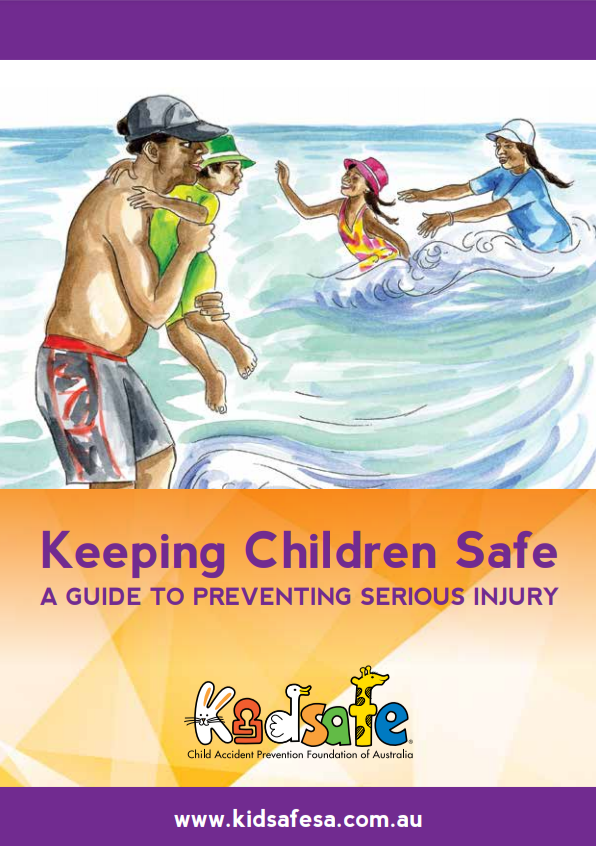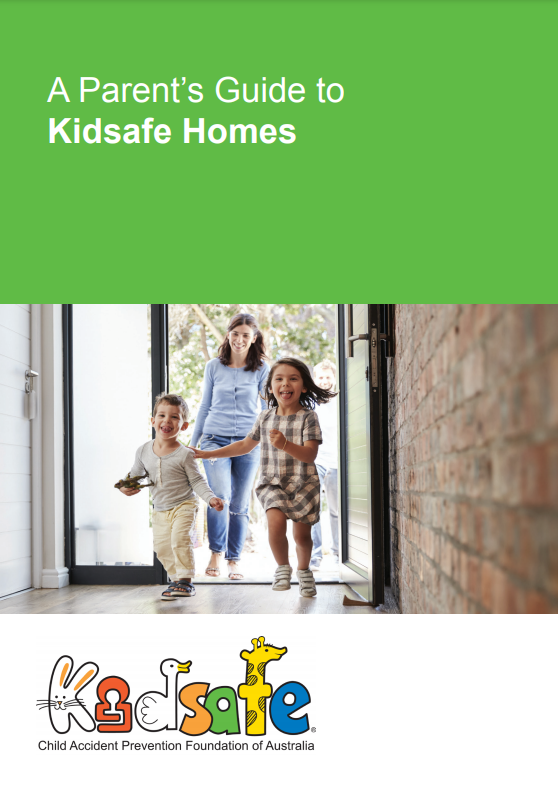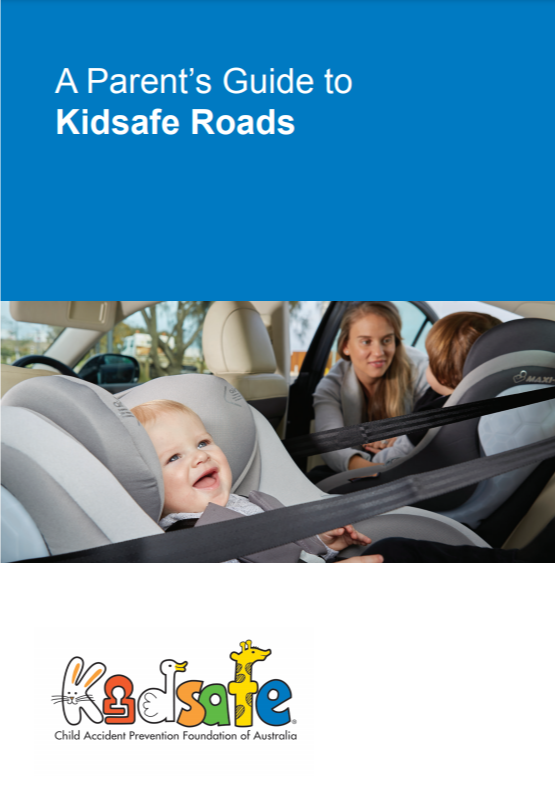Kidsafe SA
Kidsafe SA is a not-for-profit, non-government organisation dedicated to preventing unintentional deaths and reducing the incidence and severity of injuries to children aged less than 15 years. Kidsafe SA provides information, education, training and advocacy to help families, communities, organisations and government become more aware of how to reduce unintentional childhood death and injuries.
The following resources, and more, are available on the Kidsafe SA Resources page.
The Keeping Children Safe: A Guide to Preventing Serious Injury booklet has easy to understand information about the most common and serious injuries to Australian children and ways to prevent them. The topics it covers are falls, burns and scalds, drowning, button batteries, choking and suffocation, poisoning, dogs and kids, safe sleeping, child car seats, hot cars, driveway safety, pedestrian safety and useful contacts and information.
The Parent’s Guide to Kidsafe Homes has information about how parents and carers can prevent child injuries around the house. The guide includes information about falls, drowning, poisoning, burns and scalds, choking and suffocation, electrocution, finger jams, toys, dog bites and more.
The Parent’s Guide to Kidsafe Roads describes simple steps parents and carers can take to help make children safer road users. The guide includes information about driveway safety, child care restraints, driver safety, hot cars, pedestrian safety, small wheeled devices and bicycle safety.
Safe sleeping
Many infant sleeping fatalities can be prevented by ensuring infants have a safe sleeping environment. The following resources provide information about making an infant's sleeping environment safe, including information for Aboriginal children and families.
Pool safety
Drowning is a leading cause of accidental death in young Australian children. The following resources provide information about pool fences, supervision around pools and swimming pool safety.
Child car seats and restraints
National Guidelines for the Safe Restraint of Children Travelling in Motor Vehicles have been developed by Neuroscience Research Australia and Kidsafe and were updated in 2021. They provide best practice recommendations for how to safely transport children in motor vehicles. For more information and to access the guidelines, visit the Kidsafe Child Restraint Guidelines webpage.
Weighted blankets and other weighted items
Weighted blankets and other weighted items are now readily available to purchase from stores and may be recommended to carers to assist children with calming. There are risks associated with the use of these items with children that may not be apparent to carers or others who recommend these items.
Frequently occurring mistakes which create risks are weighted blankets or items being too heavy for the child or weighted blankets being left on children while they are sleeping. The potential impacts of these mistakes include difficulty with breathing, physical injury or suffocation.
Because of the risks, weighted blankets and other weighted items must not be used as a therapeutic tool for any children or young people under the guardianship of the Chief Executive without the prescription of an Occupational Therapist.
The Occupational Therapist will recommend a trial of the item as part of a risk assessment and consider:
- the child’s ability to move freely from under the weighted item if placed on them
- the child’s ability to breathe freely whilst under the weighted item
- recommended locations in the home and times to use
- impact on the child’s ability to regulate (calm down)
- the child’s tendency or preference to seek it out
- that the child does not mouth or chew on item – risk of inhaling contents
- hygienic cover and care of item
- environmental risks – other children in the house.
Before purchase of a weighted blanket or weighted item the Occupational Therapist must:
- prescribe the size and weight
- provide the case worker and carers with written guidance outlining the intended use including the frequency and length of time of use,
- provide any other relevant safety precautions that relate to the individual child’s health, development and environment.
If a carer identifies that a child in care has an existing weighted blanket or item or is aware one is being considered for purchase, the carer should check with the child’s case worker as to whether the weighted blanket or item has been prescribed by an Occupational Therapist.
If the item is in use without an Occupational Therapy prescription, the carer should let the case worker know and stop using the weighted blanket or item until a prescription can be obtained. The case worker can then consider how an occupational therapist prescription can be arranged and engage an Occupational Therapy service provider. There may be additional benefits in referring the child to an Occupational Therapist, e.g. the therapist may be able to provide an understanding of the child’s overall sensory needs and assist with self-regulation strategies.




